
Checklist for electrical installation at temporary events
Checklist for electrical installation at temporary events
Temporary electrical installation is a key component in the success of an event. From initial planning to site restoration, each stage must be anticipated and documented to ensure safety, performance, and compliance. This checklist outlines the key points to follow for a well-managed electrical installation.
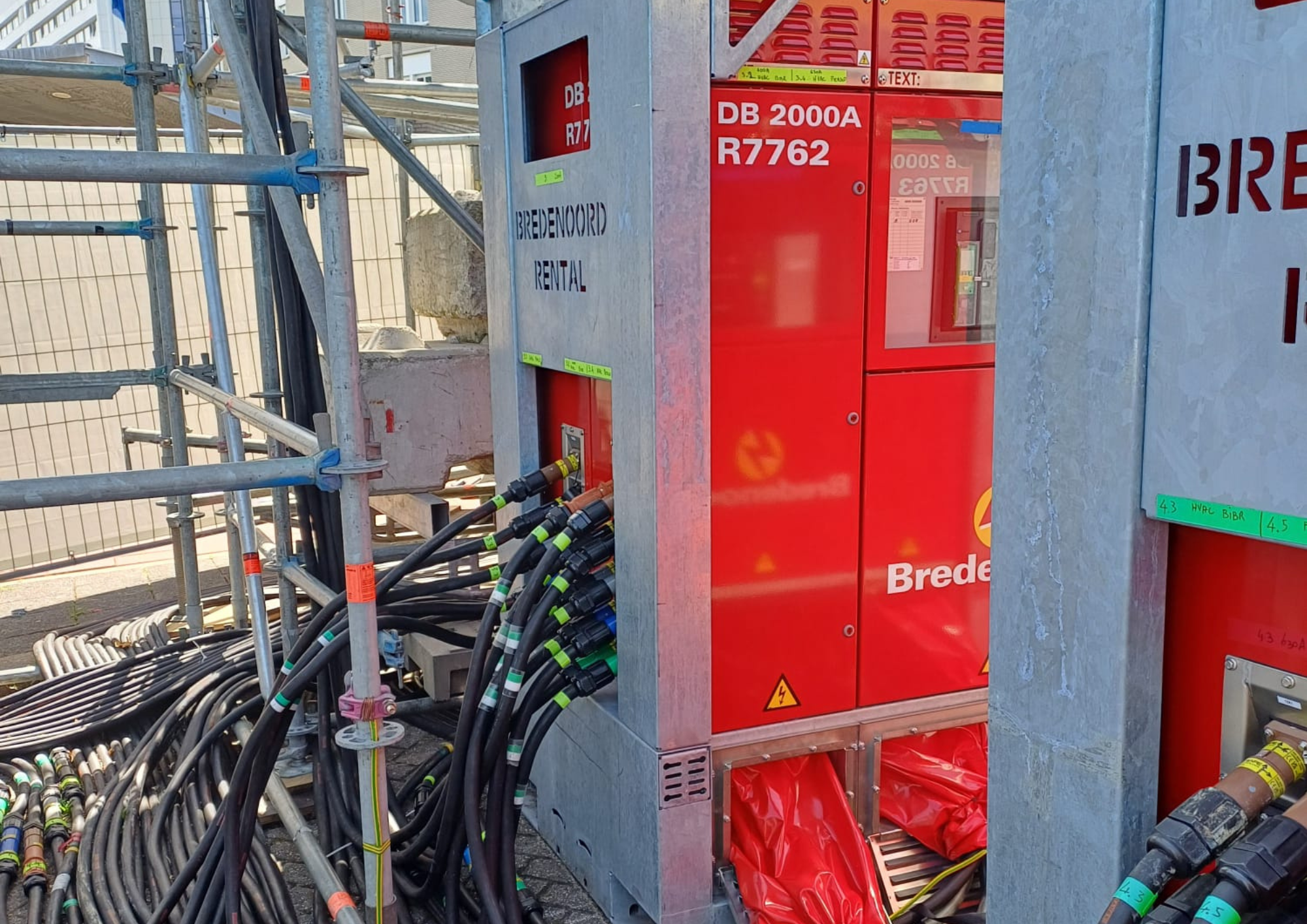
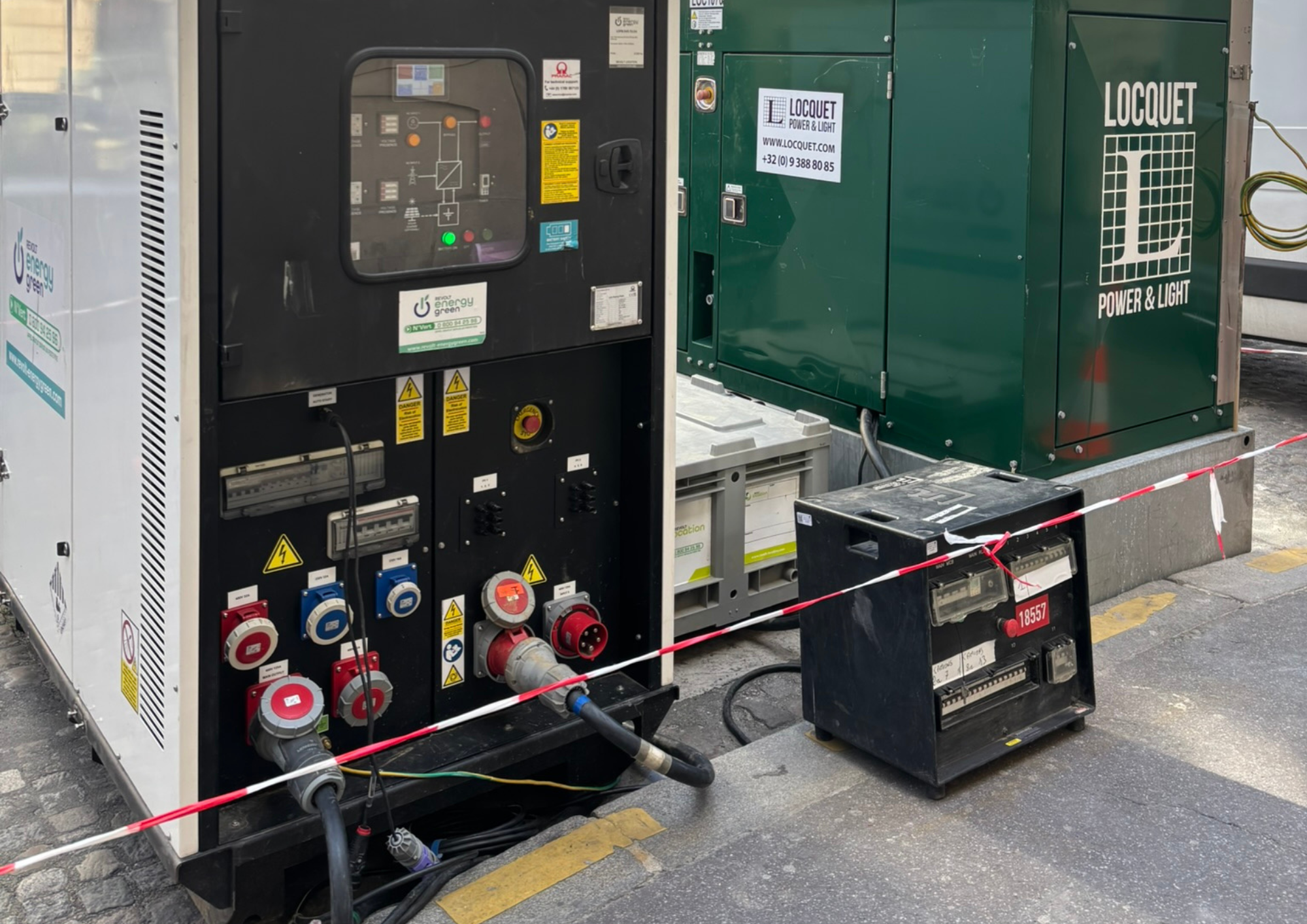
.png)
Initial preparation and planning
The success of a temporary electrical installation relies on a thorough preparation phase. Even before laying the cables, it is essential to identify site constraints, assess the specific needs of service providers, and plan a coherent logistical setup. This anticipation helps reduce the risk of unexpected issues on site.
Assessment of power requirements
The first essential step is to accurately assess the event’s power needs. This involves listing all equipment to be powered, such as lighting, sound systems, video, exhibition stands, as well as heating, ventilation, and air conditioning systems. This evaluation allows for proper sizing of the required power and helps plan a suitable power distribution system, thereby minimizing the risk of overloads or outages.
GL events Audiovisual & Power, with its expertise in power production and distribution for events of all sizes, supports its clients during this crucial planning phase.
Selecting locations for electrical installations
Choosing where to install the electrical equipment on the event site is a strategic step. It is important to consider the specific features of the terrain, the proximity of power sources, protection from weather conditions, and ease of access for maintenance or emergency interventions. This decision must also comply with labor regulations and meet the safety requirements specific to each site. A careful selection of locations ensures better organization of the work, optimizes cable lengths, and facilitates quick commissioning, while reducing technical uncertainties.
Choice of equipment and materials
The selection of equipment is a key factor in ensuring the stability and safety of the temporary electrical network. It must comply with current standards while adapting to on-site conditions such as weather, foot traffic, and event duration. A careful selection guarantees the overall performance of the system.
Appropriate cables and connections
Cables and connection systems used in a temporary electrical installation must be carefully chosen based on site constraints. They must be sufficiently resistant to voltage, moisture, and repeated foot traffic. The type of cable, its diameter, length, and load capacity must be strictly checked to ensure stable and secure power supply. All cabling work must be carried out in full compliance with safety standards, particularly regarding signage, physical protection, and separation of circuits.
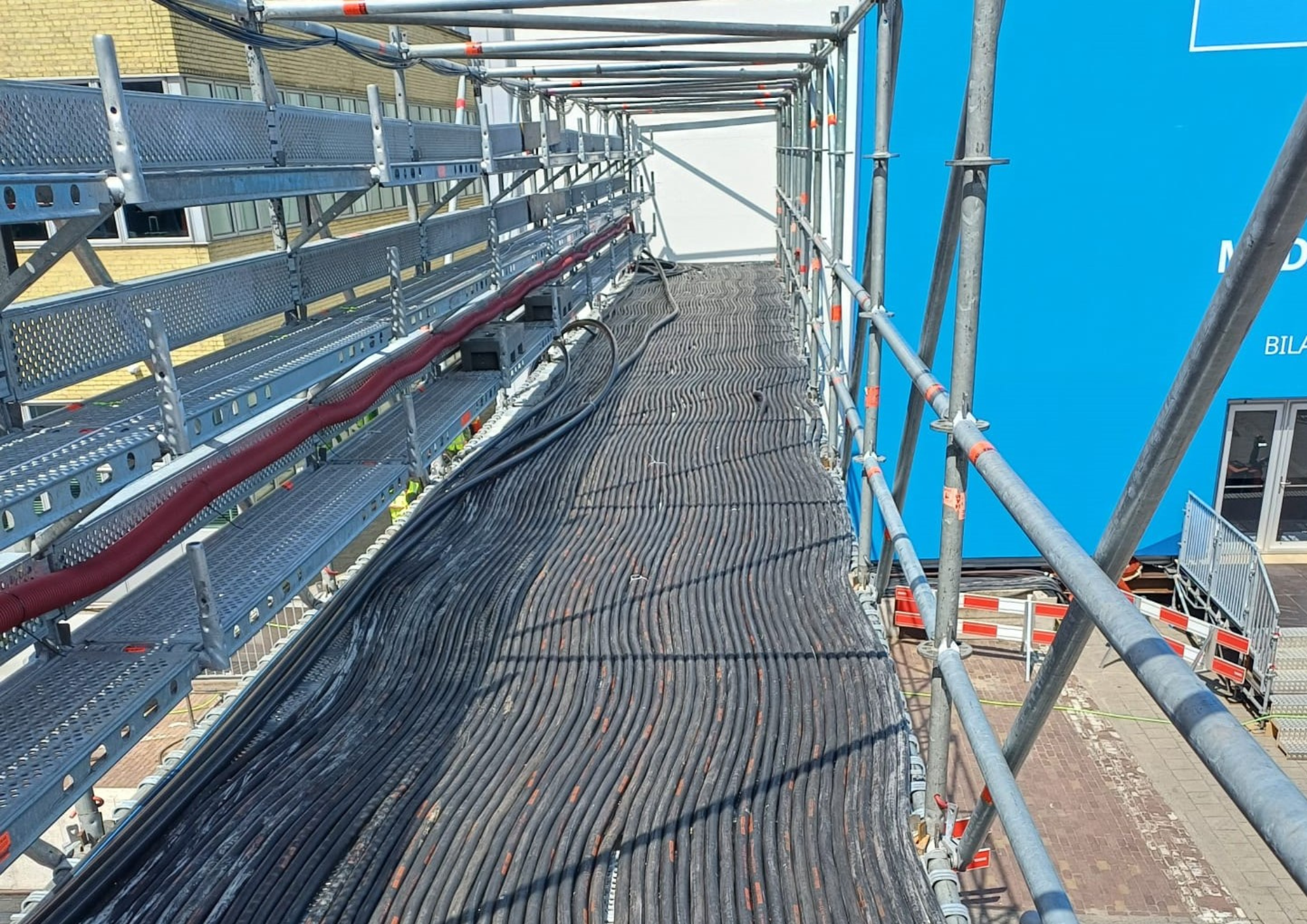


For example, during the Cannes Yachting Festival, GL events Audiovisual & Power implemented electrical solutions that included waterproof distribution boxes, high-voltage cables, and power generators. These products ensured consistent and efficient power distribution across the entire site, while optimizing overall electricity consumption.
Standards and regulations to follow
All temporary electrical installations must comply with current safety regulations, particularly those outlined in the Energy Code and the recommendations of CONSUEL. Equipment compliance is checked at every stage, from material selection to final commissioning. Regulatory requirements apply to circuit breakers, cables, distribution panels, and grounding systems. Adhering to these standards guarantees safety for the public, technicians, and site operators, while reducing the risk of electrical accidents.
Circuit breakers and safety systems
Circuit breakers protect temporary electrical installations against overloads and short circuits. They must be sized according to the needs identified during the planning phase and installed in accordance with site constraints. Their function is to immediately cut off the power supply in the event of a fault, thereby limiting risks to both people and equipment. Safety systems also include residual current devices (RCDs), voltage monitoring equipment, and grounding systems. Preventive maintenance of these protections ensures their effectiveness throughout the duration of the event.
GL events Audiovisual & Power offers a range of event-specific power distribution boxes and panels equipped with protective devices, sockets suited to temporary needs (32 A, CEE Tetra), and modular features allowing configuration based on site requirements.
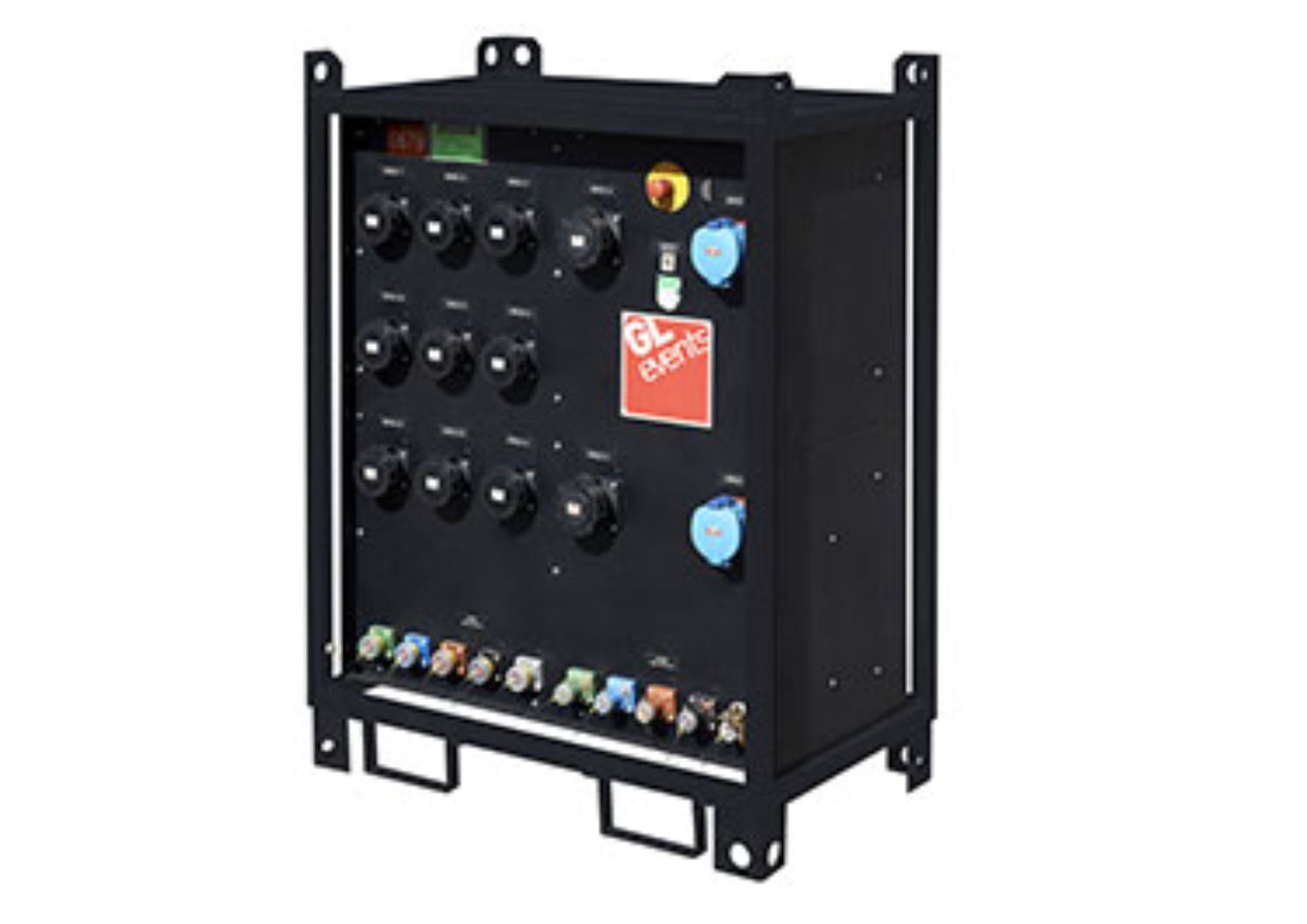
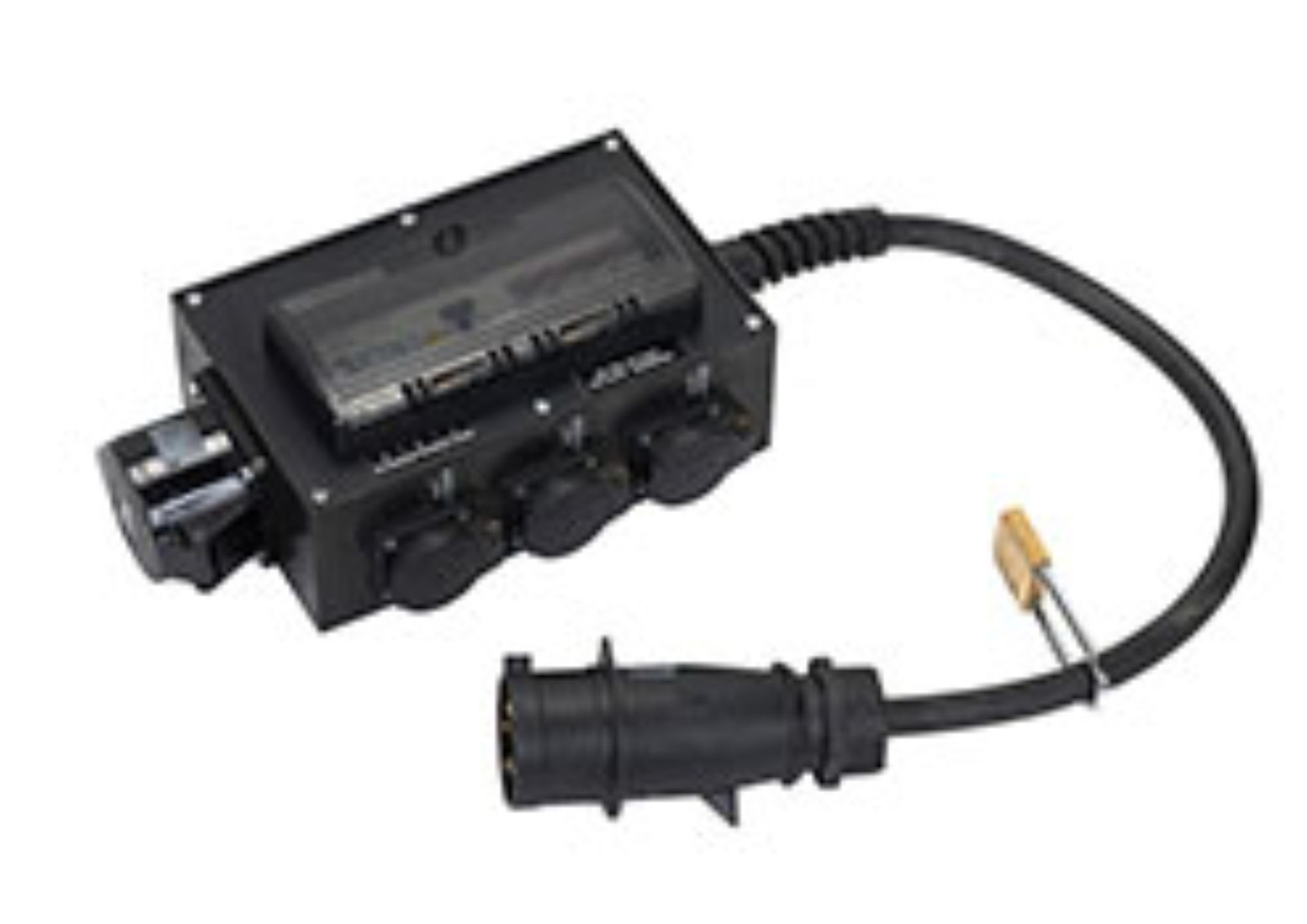
Installation et configuration sur site
Once the planning phase is complete, on-site deployment must follow a precise technical protocol. The electrical worksite must be carried out methodically, in coordination with other trades present, to ensure smooth, fast, and compliant implementation.
Installation of cabling and connections
During the on-site installation phase, each step must be carried out according to a pre-approved technical plan. Cables are laid with precision, ensuring protection against mechanical stress and outdoor conditions. Connections must be stable, insulated, and clearly identified to prevent any confusion. The worksite must be properly marked to indicate technical areas and restrict unauthorized access. On-site work organization must also take into account the project timeline, the constraints of working alongside other teams, and weather conditions that may impact the electrical installations.
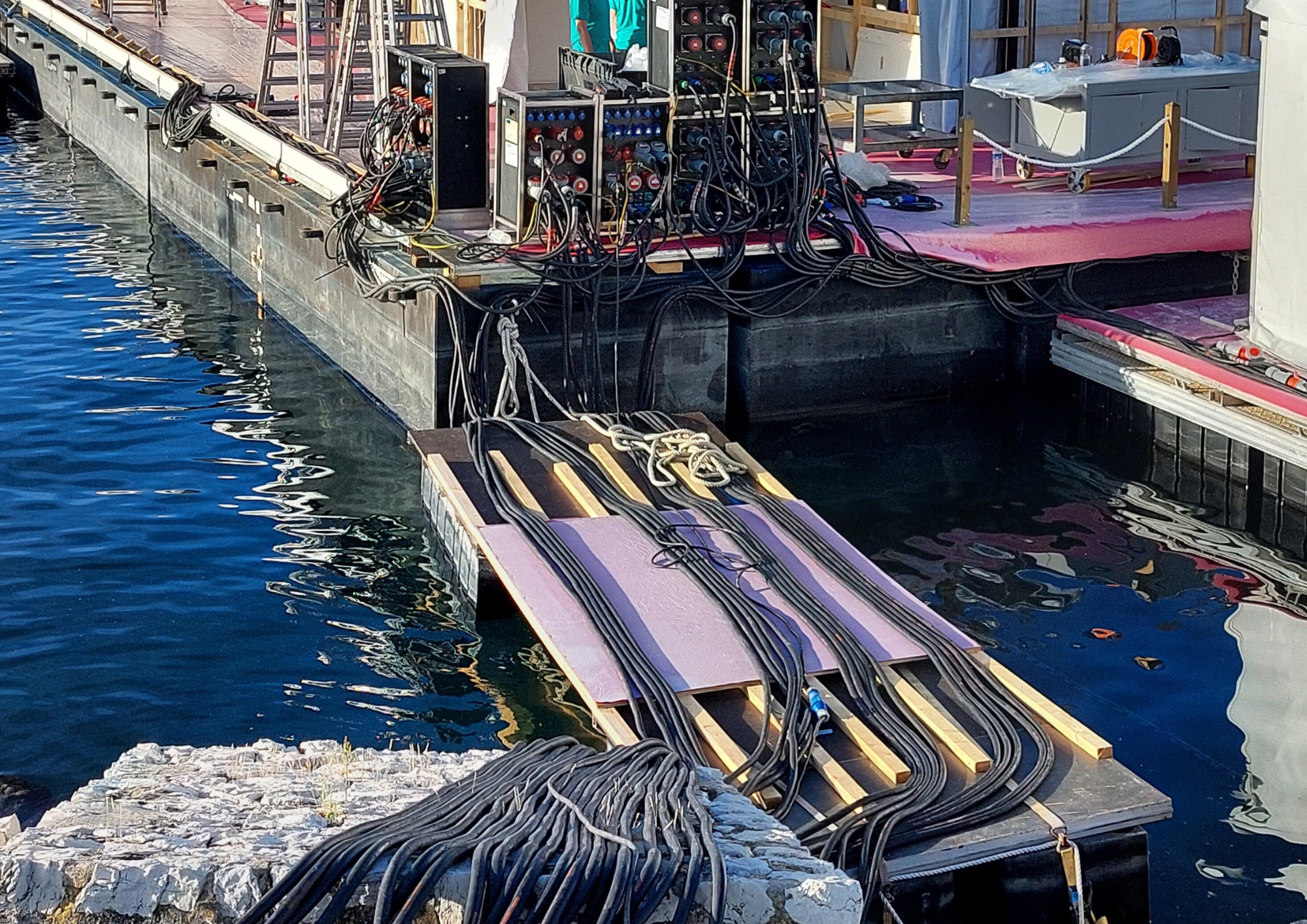
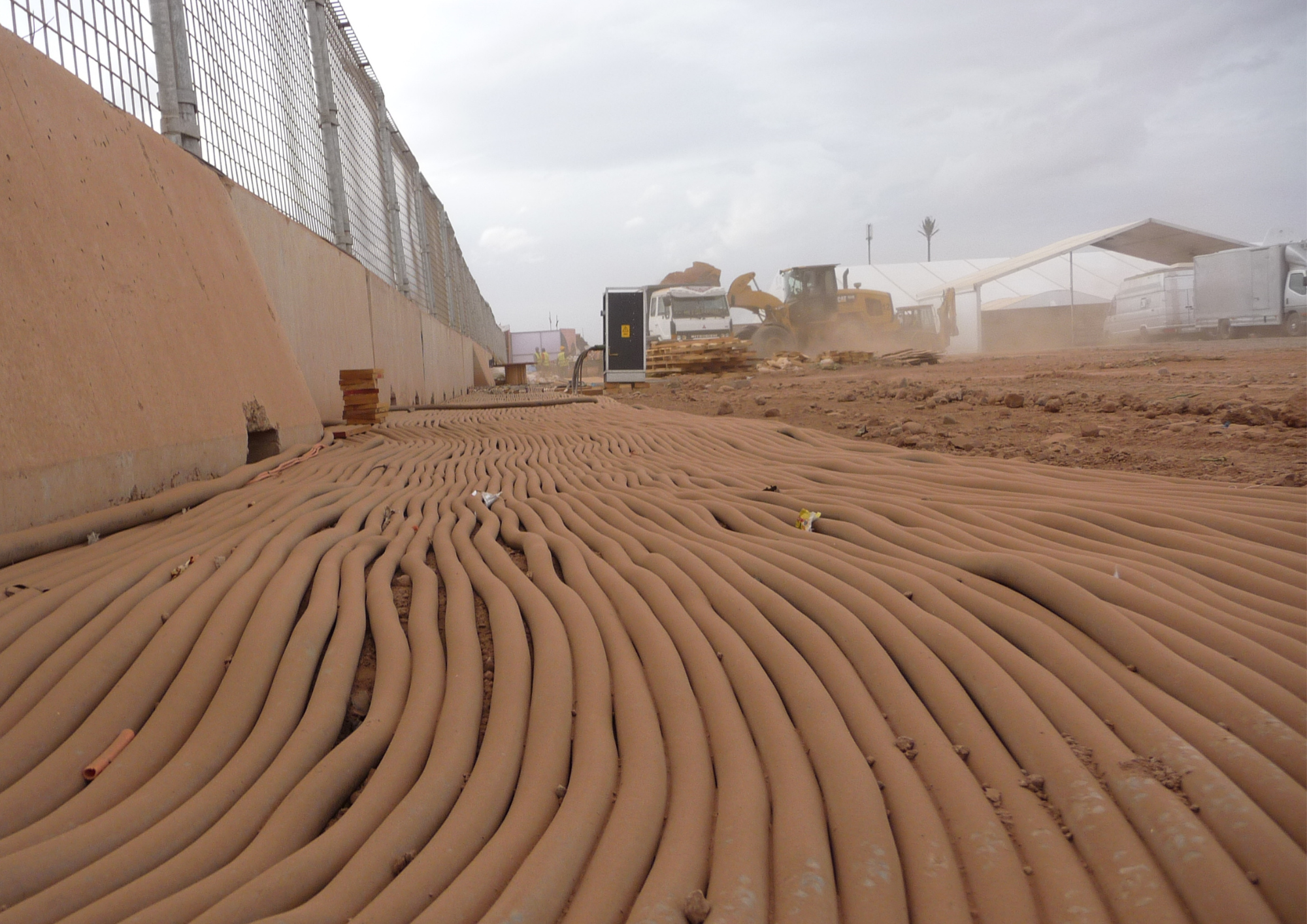
Testing installations to ensure proper operation
Before final energization, all electrical installations must undergo functional tests. These tests verify conductor continuity, polarity, circuit breaker efficiency, and grounding compliance. They also confirm the correct operation of equipment under different loads and ensure there are no insulation faults. This verification process is essential before operating the temporary electrical network, as it guarantees user safety and compliance with regulations.
Verification procedures and safety checks
Inspections must be formalized through documented controls carried out by qualified technicians. Every part of the installation is visually and technically checked to ensure there are no faults. Measuring instruments are used to check voltages, verify protection devices, and test the effectiveness of grounding systems. Once the entire setup is validated, a verification report is drafted. This document serves as proof of the electrical installation’s compliance and may be required in the event of an inspection by relevant authorities.
Managing the unexpected and ensuring safety
Anticipating the unexpected is an integral part of an event electrical provider’s role. Weather-related, technical, or human incidents must be considered from the design phase to ensure uninterrupted service under any circumstances.
Preparing backup solutions
In the context of an event, technical issues can never be entirely ruled out. That’s why it is crucial to plan for backup solutions as early as the design stage. This includes installing backup generators, the ability to reroute certain circuits in the event of a failure, or setting up temporary power storage systems. These backup systems must be tested regularly to ensure proper operation when activated. Rapid response also depends on a well-trained team and ready-to-use maintenance tools.
As part of our mission for the Paris 2024 Olympic and Paralympic Games, we designed and deployed a large-scale temporary power system, including 75 high-voltage/low-voltage transformers, 2,500 power distribution cabinets, and over 8,000 km of cabling. This system, designed from the outset to cover official venues, enabled us to ensure uninterrupted service in line with the requirements of a global-scale event.
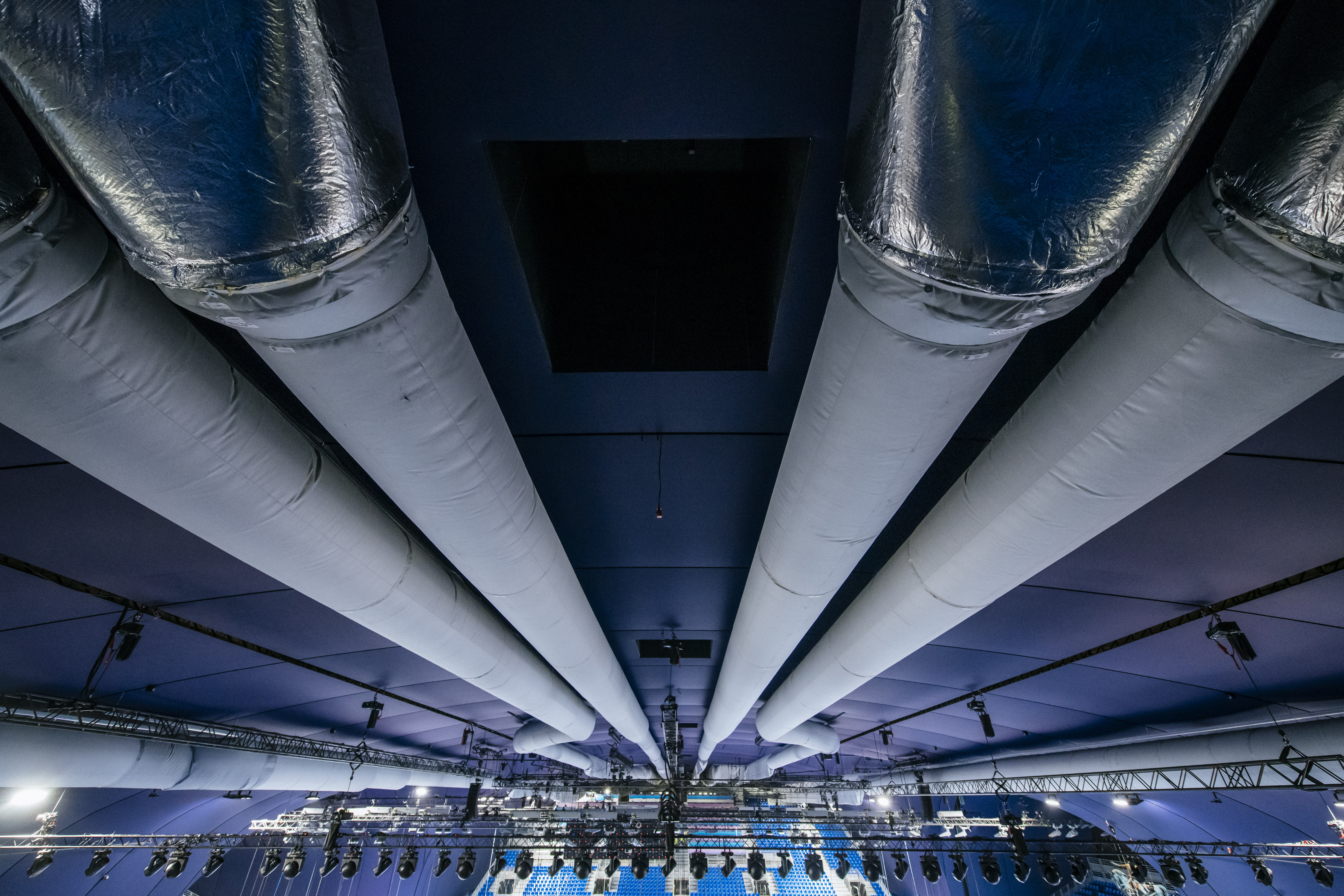
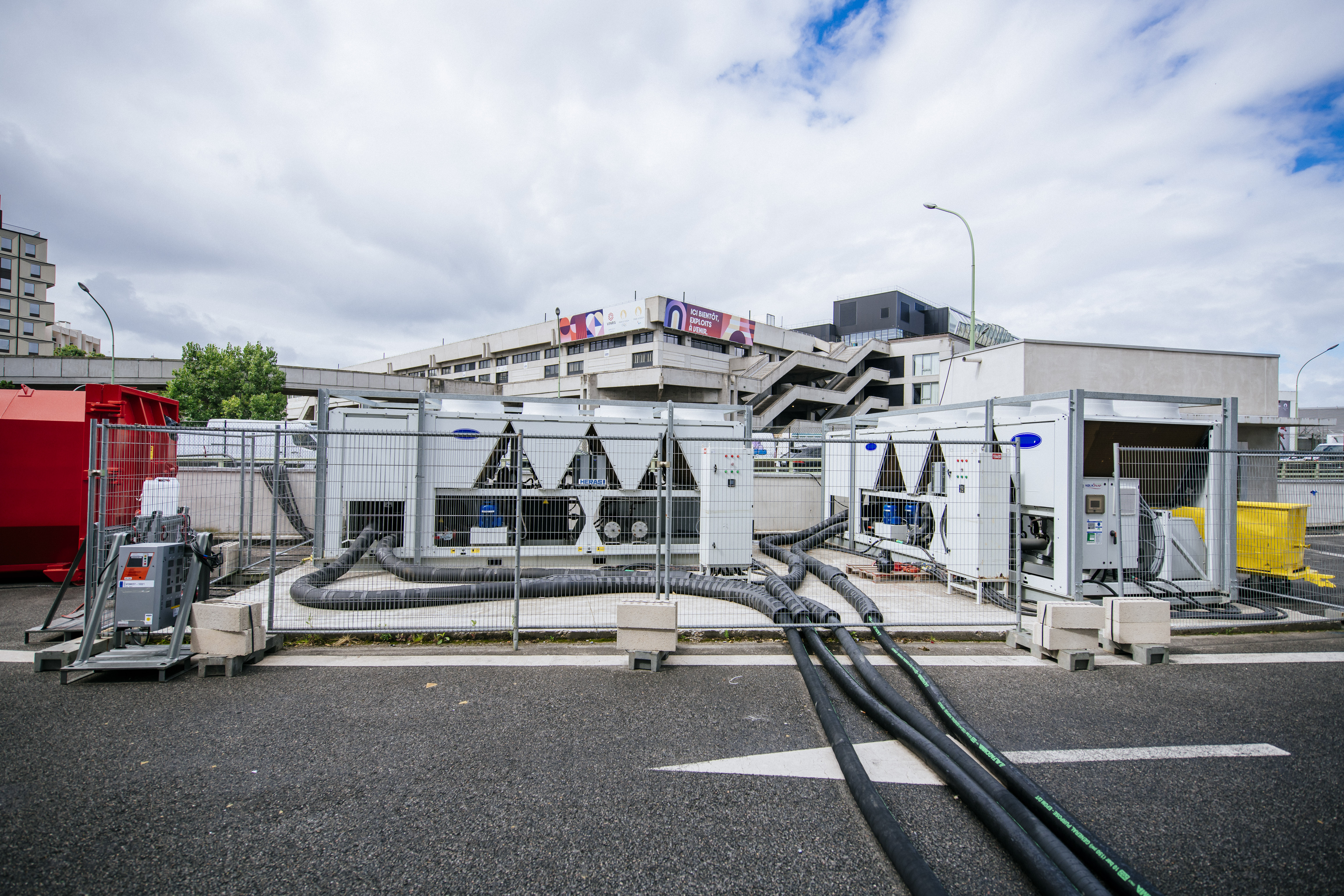
Safety instructions and emergency protocols
The safety of both personnel and the public depends on clear instructions and well-established emergency procedures. Every staff member must be informed of the applicable protocols, know how to locate emergency shut-off devices, and be able to alert the appropriate services in the event of an incident. These instructions also include evacuation procedures, recommended behavior in case of electric shock, and specific guidelines related to voltage or maintenance work. Simulation exercises can be organized to ensure optimal responsiveness.
Dismantling and site restoration after the event
Once the event is over, the dismantling of electrical installations must be carried out with the same care as their initial setup. This final phase is crucial not only for site safety but also for the reusability of equipment for future projects.
Safe disconnection of equipment
The dismantling of temporary electrical installations must be organized with the same rigor as their deployment. Each device is shut down in a specific order, following the defined safety procedures. Cables are disconnected with no voltage, avoiding any accidental contact, and protective devices are removed without damaging their supports. This phase is essential to preserve equipment for future use and to prevent any end-of-site incidents.
Post-event evaluation and reporting
After dismantling, an evaluation phase allows for a detailed assessment of the equipment used, the overall effectiveness of the installation, and any anomalies observed. A comprehensive report is drafted to compile technical observations, recorded incidents, maintenance actions carried out, and recommendations for future events. This document contributes to the continuous improvement of practices, ensures traceability of the work performed, and helps maintain the safety and compliance of electrical installations over time.
